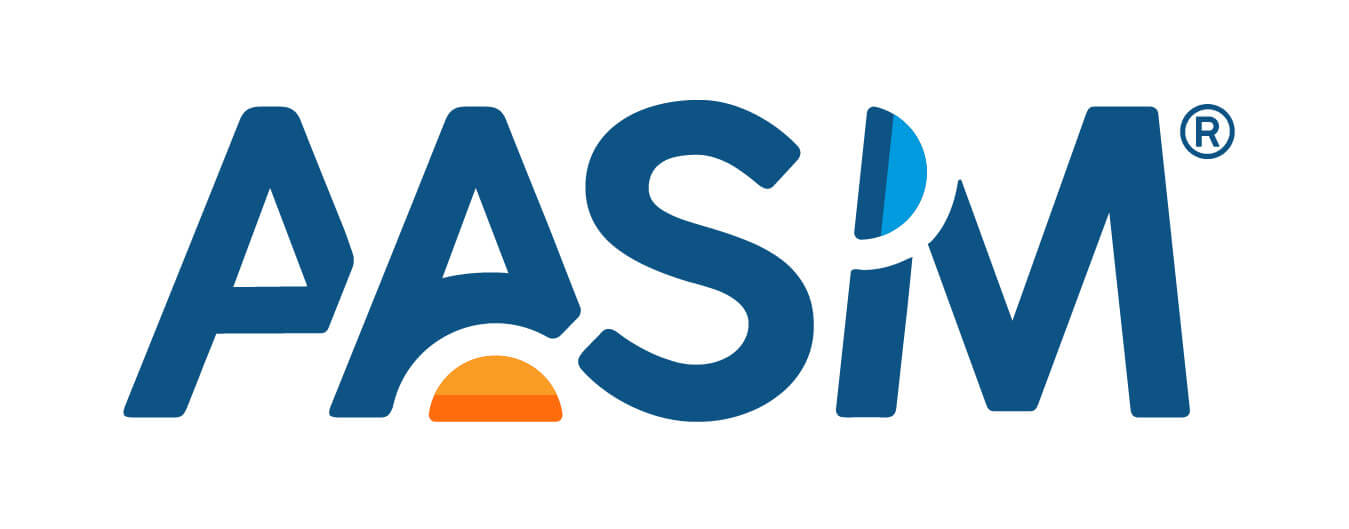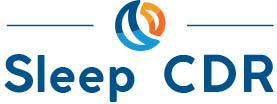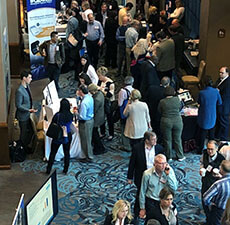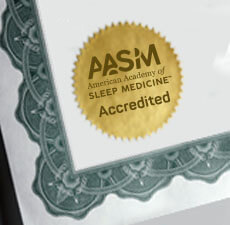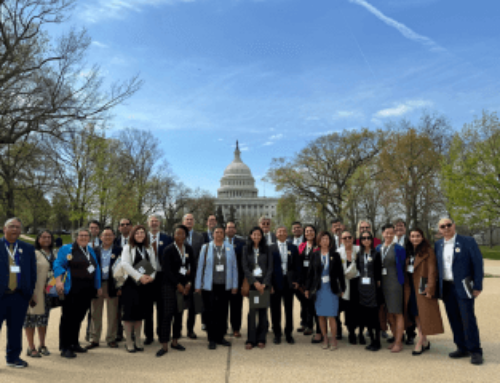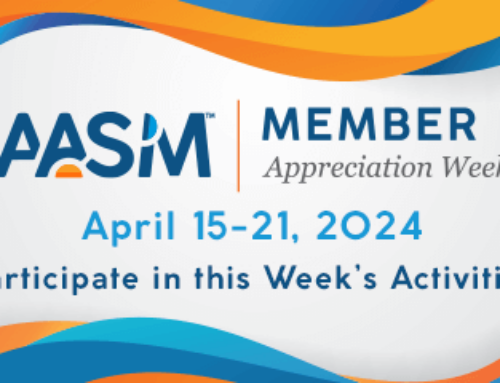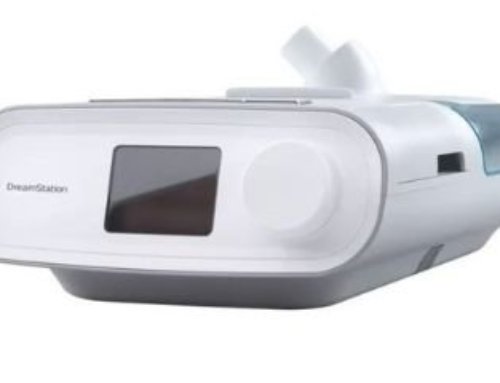With the COVID-19 pandemic and the Philips PAP device recall both continuing into 2022, it didn’t feel like a “new” year for sleep medicine professionals when Jan. 1 arrived. However, it was a promising sign when 170 sleep clinicians gathered in Phoenix in February for Sleep Medicine Trends 2022, the AASM’s first in-person event since early 2020. Then more than 3,800 clinicians, scientists and exhibitors traveled to Charlotte for the SLEEP 2022 annual meeting of the Associated Professional Sleep Societies (APSS) in June, which was another positive development for sleep medicine professionals who had been gathering virtually for the past two years.
Throughout 2022, there were a variety of other significant developments and changes that had an impact on the sleep field. Here is a recap of the top sleep medicine news in 2022. You can explore each topic below for key headlines from the past year, and you can review the quarterly State of Sleep Medicine Report for more highlights and details.
The protracted recall of 5.5 million PAP devices by Philips Respironics, announced in June 2021, continued to be the dominant story in the sleep field in 2022. Unfortunately, the situation went from bad to worse throughout the year. In January Philips recalled certain Trilogy Evo ventilators and repair kits for the Trilogy Evo muffler assembly due to potential health risks from the sound abatement foam. In March the FDA issued a notification order requiring Philips to improve its communication about the recall, and in April Philips announced it had received a subpoena from the U.S. Department of Justice. In August Philips recalled nearly 1,700 BiPAP machines — 386 of which were distributed in the U.S. — because they may contain a plastic contaminated with a non-compatible material, and the company announced its CEO would step down. In September Philips alerted customers about certain CPAP and BiPAP masks due to concern that their magnets can interfere with implanted metallic medical devices, and the Department of Justice announced Philips Respironics had agreed to pay over $24 million to resolve allegations it provided illegal inducements to DME suppliers by sharing physician prescribing data free of charge to assist their marketing efforts. In November Philips reported that Trilogy ventilators reworked due to the recall may have two issues: the new foam may separate from the backing and block the air inlet, and particulate matter may appear in the air pathway. Philips projected that about 90% of the 5.5 million replacement PAP devices would be produced and shipped globally by the end of the year.
The Sunshine Protection Act (S. 623), which would establish permanent daylight saving time in the U.S. in November 2023, was abruptly passed by the Senate in March. The AASM opposed the legislation and increased its advocacy in support of permanent standard time, which evidence has shown is the better option for health. In meetings with congressional offices, the AASM also began seeking a sponsor for a permanent standard time bill. In September the Sleep Research Society published a new position statement strongly supporting the adoption of permanent standard time given the risks associated with daylight saving time, including sleep loss, circadian misalignment, and adverse health effects. In October Mexico’s Senate approved a bill to eliminate daylight saving time except in some cities along the U.S. border. In November, through a collaborative effort between AASM delegates and several groups within the AMA, the AMA House of Delegates passed a resolution supporting the establishment of permanent standard time across the U.S. The organization Save Standard Time, with funding from the AASM Foundation, released the first video in its 12-video series that will explore how clock change affects our lives. View the AASM daylight saving time position statement.
The U.S. Food and Drug Administration cleared several new devices for use in clinical sleep medicine. In January Wesper announced FDA clearance for its Wesper Lab system, which assists trained personnel in the diagnosis of obstructive sleep apnea with data from a wireless patch component the user can apply to their body in the comfort of their own bed. Also in January, the Sunrise device, which uses a chin sensor to measure mandibular movement and detect OSA, received De Novo classification from the FDA as a novel Class II medical device. In April Onera Health announced that its subsidiary in the Netherlands had received 510(k) market clearance from the FDA for its clinical-grade, patch-based Onera STS system for polysomnography studies. In July Australian company ResApp Health announced that its iPhone app SleepCheckRx, which analyzes breathing and snore sounds to screen for OSA, had received 510(k) clearance from the FDA as prescription-only software as a medical device. Also in July, Cerebra Medical, a Canadian technology company, announced it had received 510(k) market clearance from the FDA for its Cerebra Sleep System, a lab quality in-home PSG that is self-applied by the patient, without the presence of a technician.
The FDA also took action on several new medications for use in clinical sleep medicine. In January Idorsia announced that the FDA had approved Quviviq (daridorexant), a dual orexin receptor antagonist, for the treatment of adult patients with insomnia, characterized by difficulties with sleep onset and/or sleep maintenance. In July Avadel announced that the FDA had granted tentative approval to Lumryz (FT218), a once-at-bedtime formulation of sodium oxybate to treat excessive daytime sleepiness or cataplexy in adults with narcolepsy. (Following a patent ruling by a U.S. district court, Avadel announced in November that it is seeking to accelerate the FDA’s final approval decision for Lumryz.) In October Eli Lilly and Company announced the FDA has granted Fast Track designation for the investigation of tirzepatide for the treatment of adults with obesity or overweight and weight-related comorbidities such as OSA.
Progress continued in the development of novel medications to treat OSA. Apnimed, a clinical-stage pharmaceutical company focused on developing oral pharmacologic treatments to address OSA and related disorders, announced in May that it had raised $62.5 million of committed capital in a Series C financing. In June the company announced that its oral pharmacologic AD109, which combines atomoxetine with aroxybutynin and is dosed once daily at bedtime for the treatment of OSA, has received Fast Track designation from the FDA. In October Apnimed announced positive topline results from the MARIPOSA Phase 2b trial of AD109, showing a statistically significant reduction in AHI, improved daytime symptoms, and good safety and tolerance.
In March, Healthcare Limited announced preliminary analysis of data from a phase 2 proof of concept clinical trial to assess IHL-42X, a fixed dose combination of dronabinol and acetazolamide that is being developed as a treatment for OSA in adults. Incannex then announced in May that it had completed a pre-investigational new drug application meeting with the FDA to discuss the development of IHL-42X.
Several of the world’s largest and most influential technology companies announced new sleep-related products and services in the fall. In September, Amazon announced the release of Halo Rise, a contactless sleep tracker powered by a low-energy radar sleep sensor and advanced machine learning. The bedside device has a smart alarm and wake-up light, and it tracks the person nearest to the device. Also in September, Apple announced watchOS 9 provides more sleep insights with the introduction of sleep stages. With signals from the accelerometer and heart rate sensor, Apple Watch estimates when users are in REM, Core or Deep sleep, and when they’re awake. (In January, Apple had quietly stopped selling its Beddit Sleep Monitor, which was an indicator that the company was focusing more talent and resources on improving the sleep tracking capabilities of the Apple Watch.) In October, Google announced the release of its first Google Pixel Watch, combining Google features with health and fitness insights from Fitbit. The watch tracks breathing rate and heart rate variability, and it provides a Sleep Score when you wear it in bed. Verily, which is a company of Alphabet (the parent company of Google), partnered with ResMed for the November launch of Primasun, which works with employers and health care providers to identify populations at risk and connect patients to sleep physicians for diagnosis and treatment. You can get additional insight from Deloitte in its report, “2022 connectivity and mobile trends.” AASM members also can visit the online resource #SleepTechnology for assessments of sleep apps and devices.
The sleep field continued to see the development of technology innovations to improve patient care. For example, at SLEEP 2022 in June, SleepRes, LLC introduced the V-Com, a new accessory that is added between the CPAP mask and hose to reduce inspiratory pressure and flow. It helps improve comfort with minimal to no reduction in expiratory pressure. In July Nyxoah announced the FDA has approved an investigational device exemption enabling the company to initiate a clinical trial to evaluate the Genio system for treatment of adults with OSA and complete concentric collapse of the soft palate. In September Transcend Inc. announced the release of Transcend Micro, the world’s smallest and lightest portable CPAP device, which weighs under a half pound and measures less than four inches, making it an ideal therapy option for patients when they travel.
Research revealed new ways in which artificial intelligence could help sleep clinicians find deeper sleep insights and diagnose sleep disorders. For example, Brigham and Women’s Hospital announced that researchers can create a picture of brain activity that acts like a fingerprint — unique for each person and consistent from one night to the next — by extracting tens of thousands of electrical events from the brainwaves of a sleeping person. UCLA Health announced that new research found a combination of machine learning and brain imaging data captured by brain magnetic resonance imaging (MRI) could accurately diagnose OSA in less than one hour, significantly faster than the standard methods.
In December the AASM published a new clinical practice guideline, based on a systematic review of the evidence, establishing clinical practice recommendations for the management of rapid eye movement (REM) sleep behavior disorder in adults. Earlier in the year, a new health advisory developed by the AASM Public Safety Committee and Public Awareness Advisory Committee encouraged parents to talk to a health care professional before giving melatonin or any supplement to children. The AASM also updated the quality measures for the care of adult patients with OSA based on a review of the current medical literature, other existing quality measures focused on the same patient population, performance data and published data.
At SLEEP 2022 in June, the AASM announced the launch of “Sleep is Good Medicine,” a national campaign to increase public education about the importance of sleep and its connection to health. Through the campaign, the AASM will work to elevate sleep as a key pillar of health — equivalent to nutrition and exercise. The campaign builds upon the AASM’s existing awareness efforts for the public and health care professionals, serving as a key initiative in addressing information gaps about the value of sleep. The impact of these ongoing awareness efforts was seen when the American Heart Association announced in late June that it had updated its checklist to measure cardiovascular health, previously called Life’s Simple 7 but now called Life’s Essential 8, by adding healthy sleep as a factor that is essential for optimal cardiovascular health. View the AASM position statement, “Sleep is essential to health.”
The AASM and other specialty societies have been vocal advocates for the elimination of ongoing maintenance of certification examinations, and these efforts produced results in 2022. In January the American Board of Internal Medicine (ABIM) launched the Longitudinal Knowledge Assessment, giving sleep medicine physicians an alternative to the 10-year maintenance of certification exam. The LKA is a 5-year cycle during which you answer questions each quarter and receive regular feedback on how you’re performing. In June the ABIM announced that it will begin offering the sleep medicine initial board certification exam annually — instead of every other year — starting in 2023. Enrollment opened in December for all 2023 ABIM sleep medicine assessments, including the new LKA with OSA emphasis. It has more questions about OSA, bruxism, snoring, GERD, and home sleep apnea testing.
After posting a public draft in March on screening for OSA in adults, the U.S. Preventive Services Task Force announced in November that it had published its final recommendation statement. The USPSTF concluded there is insufficient evidence to assess the benefits and harms of screening for OSA in adults. In December the Agency for Healthcare Research and Quality posted the final version of its technology assessment of PAP therapy for OSA along with its disposition of comments. In 2021 the AASM led a multi-society response to the draft assessment.
Frustration with the current Medicare physician payment system continued to grow among physicians and medical societies. In July the AASM was one of 120 medical specialty societies to sign on to the American Medical Association’s Characteristics of a Rational Medicare Payment System. The AMA document outlines several key principles for Medicare payment reform, which also became a key component of the AMA’s Recovery Plan for America’s Physicians. In June the AMA noted that Medicare’s trustees had issued a report indicating that the physician pay system is unsustainable. However, in September the Congressional Budget Office announced the release of its report, which focused on cutting costs rather than appropriately reimbursing physicians. The CBO identified policy approaches that federal lawmakers could adopt to reduce the prices that commercial insurers pay for hospitals’ and physicians’ services, thereby lowering health insurance premiums and the cost of federal subsidies.
It became widely recognized that the COVID-19 pandemic had exacerbated the pre-existing problem of physician burnout. For example, Part Two of The Physicians Foundation’s 2022 Survey of America’s Physicians reported that for the second year in a row, six in 10 physicians often have feelings of burnout, compared to four in 10 before the pandemic in 2018. United States Surgeon General Dr. Vivek Murthy issued a new Surgeon General’s Advisory highlighting the urgent need to address the health worker burnout crisis. You can download the advisory and the one-page summary, and you can view the AASM position statement, “Sleep, fatigue and burnout among physicians.”
By Thomas Heffron, AASM senior director
